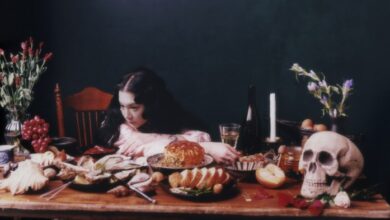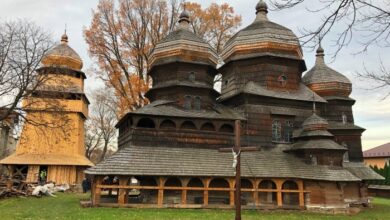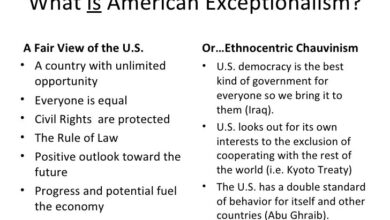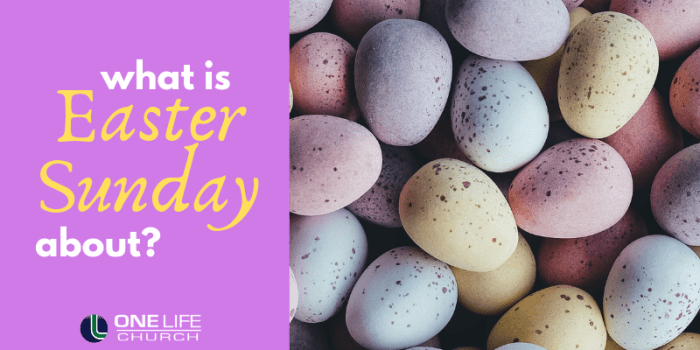
Why Easter always Sunday? This ancient holiday, steeped in religious and cultural significance, isn’t just a random date. Its placement on a Sunday has a complex history, intertwined with lunar cycles, the spring equinox, and the Christian faith. This journey delves into the historical context, religious meaning, calculation methodology, cultural traditions, alternative perspectives, and even its modern impact on society.
From its origins in ancient spring festivals to its evolution as a Christian celebration of the resurrection, Easter’s date has undergone a fascinating transformation. We’ll explore the factors that determine this special day and why it continues to hold such a prominent position on the calendar.
Historical Context
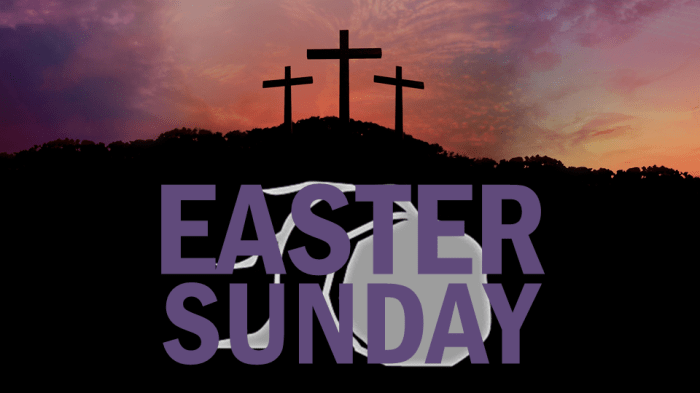
Easter, a significant Christian festival, has a rich and complex history intertwined with ancient traditions and evolving religious practices. Its celebration, while focused on the resurrection of Jesus Christ, draws from a tapestry of cultural and religious influences. This historical journey reveals how Easter’s date, initially tied to the lunar calendar, transitioned to its current placement on a solar calendar.The origins of Easter lie in the Jewish Passover.
Early Christians, celebrating the resurrection of Jesus, adopted some elements of Passover, including the symbolism of new life and liberation. The celebration, however, gradually developed its own unique identity and traditions.
Origins and Early Celebrations
The very first Easter celebrations were deeply rooted in the Jewish calendar. Early Christians adapted existing spring festivals, particularly the pagan celebrations associated with the goddess of spring and fertility, to mark the resurrection of Jesus. This blending of traditions led to a syncretism of practices, where existing customs were adapted and incorporated into the Christian narrative.
Evolution of Date Calculation
The calculation of Easter’s date was not initially standardized. Early Christians observed Easter on different dates depending on their local communities and their adherence to the lunar calendar. This variation led to difficulties in coordinating celebrations across different regions. The need for a consistent date became increasingly important as Christianity spread.
Shift from Lunar to Solar Calendar
The transition from a lunar to a solar calendar for Easter calculation was a gradual process, driven by the desire for greater unity and coordination among Christians. The complexities of the lunar calendar, with its fluctuating dates, posed challenges in maintaining a consistent celebration. The shift to a solar calendar provided a more predictable and universal method for determining the date.
Cultural and Religious Influences
Easter’s traditions have been influenced by a multitude of cultures and religions. The springtime symbolism, associated with rebirth and renewal, is found in various ancient traditions. These influences, alongside the development of Christian rituals, contributed to the rich tapestry of Easter customs observed globally.
Comparison of Date Calculation Methods
| Method | Description | Example |
|---|---|---|
| Original (Lunar) | Easter was calculated based on the date of the first full moon after the spring equinox. | If the first full moon after the equinox fell on March 22nd, Easter would be celebrated on March 22nd. |
| Current (Solar) | Easter is calculated as the first Sunday after the first full moon on or after the spring equinox. | If the first full moon after the equinox falls on March 20th, Easter would be celebrated on March 27th (the following Sunday). |
The table above highlights the key differences between the original lunar-based Easter calculation and the current method, demonstrating the transition from a more complex system to a more consistent one.
Easter’s always on a Sunday, a tradition rooted in the Jewish calendar. It’s linked to the Jewish Passover, marking the resurrection of Jesus Christ. This aligns with the Christian observance of the day, and Pope Francis, known for his strong stance on environmental issues, has emphasized the importance of caring for our planet, a concept similar to the spiritual significance of the Easter celebrations.
Learning more about his legacy regarding environmental and climate concerns can be found here: pope francis environment climate legacy. Ultimately, the connection to Sunday emphasizes the importance of rest and reflection, echoing the celebration of the resurrection.
Religious Significance

Easter Sunday holds profound significance in Christianity, marking the central tenet of the faith: the resurrection of Jesus Christ. This event, believed to have occurred three days after his crucifixion, is the cornerstone of Christian belief and shapes the practices and traditions observed during Easter. The celebration is not just a commemoration of a historical event; it’s a powerful symbol of hope, renewal, and the triumph of life over death.The resurrection of Jesus Christ is the bedrock of Christian faith.
Christians believe that Jesus, after being crucified, rose from the dead, demonstrating his divinity and power over death. This event is not just a historical anecdote; it’s a theological truth that shapes the very essence of Christianity. This belief in the resurrection provides hope for believers, signifying the possibility of eternal life and a relationship with God.
The Resurrection’s Central Role
The resurrection of Jesus Christ is the central theme of Easter. It is a pivotal event in the Christian narrative, representing the victory of good over evil and the promise of eternal life. This core belief underpins the Christian faith, shaping theologies, practices, and rituals throughout the centuries. It is seen as a triumph over death and sin, offering hope and salvation to all who believe.
Easter in Different Christian Denominations
While the core belief in the resurrection unites all Christian denominations, some variations exist in how Easter is celebrated. Catholics, for example, emphasize the liturgical aspects of Easter, with special masses and rituals. Protestant denominations often focus more on the personal experience of faith and spiritual renewal during this period. Orthodox Christians often maintain distinct liturgical practices, including specific fasting periods and celebratory traditions.
Easter always falls on a Sunday because it’s tied to the Jewish Passover, which celebrates the liberation of the Israelites. This connection to the Jewish calendar and the Christian observance of Jesus’ resurrection makes for a consistent Sunday date, unlike other holidays. Interestingly, the recent passing of Pope Francis, and the global reactions, including tributes from figures like JD Vance and Donald Trump, as seen in this article pope francis death global leaders reactions tributes jd vance trump , highlight the impact religious figures have on global events.
Despite these significant worldly events, Easter’s Sunday date remains rooted in its historical and religious significance.
Easter Traditions Across Christian Communities
The significance of Easter varies across different Christian communities, leading to a range of traditions and customs. A variety of traditions are maintained across the different denominations.
| Christian Community | Key Easter Traditions |
|---|---|
| Catholicism | Elaborate liturgical celebrations, special masses, and often elaborate processions. The focus is on the spiritual significance of the resurrection, expressed through ritual and prayer. |
| Orthodox Christianity | Strict fasting periods leading up to Easter, followed by vibrant celebrations featuring special services and communal meals. The emphasis is on the liturgical aspects and traditions passed down through generations. |
| Protestantism (various denominations) | Varying practices. Some emphasize family gatherings, church services, and personal reflection on the resurrection. Others might focus on community outreach and acts of service. The focus is often on the personal relationship with God and the meaning of the resurrection. |
Calculation Methodology
The date of Easter is not fixed; it shifts annually, determined by a complex interplay of astronomical events and religious traditions. This calculation ensures Easter always falls on a Sunday, aligning with the Christian observance of the resurrection. Understanding this process provides insight into the meticulous approach taken to maintain the calendar’s integrity and connection to the cycle of nature.The calculation hinges on the interplay of the lunar cycle and the vernal equinox.
Crucially, the date of Easter is linked to the Paschal Full Moon, a full moon occurring on or after the vernal equinox. This intricate system, while seemingly complex, ultimately maintains a consistent link between the religious observance and the natural world.
The Paschal Full Moon
The Paschal Full Moon is a crucial component in determining the date of Easter. It’s not simply the first full moon after the vernal equinox; instead, a specific calculation is used to determine the correct lunar phase. This method ensures accuracy in the calculation, preventing discrepancies in the date of Easter.
Calculating the Vernal Equinox
The vernal equinox marks the astronomical beginning of spring in the Northern Hemisphere. The exact date of the vernal equinox is determined through astronomical calculations. This date is vital because it establishes the starting point for the calculation of the Paschal Full Moon.
The Step-by-Step Calculation Process
- First, ascertain the date of the vernal equinox, which occurs around March 20 or 21 each year. This date is determined by astronomical calculations, which consider the Earth’s orbit around the Sun.
- Next, determine the date of the Paschal Full Moon. This is calculated based on the lunisolar calendar, which considers both the lunar and solar cycles. The calculation does not follow the actual lunar cycles; it uses a formula to predict the full moon phase based on the vernal equinox date.
- Subsequently, identify the Sunday following the Paschal Full Moon. This is the date of Easter. This ensures Easter is celebrated on a Sunday, in keeping with Christian traditions.
Factors Affecting Easter’s Date
- Astronomical Factors: The vernal equinox, a crucial astronomical event, sets the starting point for the calculation. Variations in the Earth’s orbit around the Sun can affect the precise date of the equinox, influencing the subsequent calculation of the Paschal Full Moon.
- Lunar Cycle: The Paschal Full Moon is calculated using a formula that anticipates the lunar cycle, not the actual moon phases. This ensures consistency and predictability in the calculation, regardless of any variations in the moon’s actual cycle.
- Religious Observance: The calculation is designed to ensure that Easter always falls on a Sunday, a crucial aspect of Christian tradition. This alignment of the holiday with the weekly Sabbath is integral to the observance.
Example: Calculating Easter 2024
Let’s consider Easter 2024. The vernal equinox fell on March 20, 2024. The Paschal Full Moon, calculated according to the formula, occurred on April 8, 2024. Therefore, Easter 2024 fell on April 21, 2024, the Sunday following the Paschal Full Moon.
Easter always falls on a Sunday, a tradition rooted in the Christian calendar. It’s tied to the Jewish Passover, and its date is calculated based on lunar cycles. This is similar to how the new pope is chosen, through a complex process involving a conclave of cardinals, selecting candidates from among themselves. Learning about the new pope election process, like the conclave, cardinals, candidates, and the successor to Pope Francis, here , reveals interesting parallels in how these significant events are decided.
Both are deeply rooted in religious tradition, highlighting the interconnectedness of religious and societal processes.
Cultural Traditions
Easter, a globally celebrated festival, transcends its religious roots to become a vibrant tapestry of cultural traditions. Beyond the symbolic significance of the resurrection, Easter customs reflect the unique values and practices of diverse societies, showcasing the power of cultural adaptation and evolution. From elaborate feasts to playful egg hunts, the spirit of renewal and joy is palpable in the varied expressions of Easter celebrations worldwide.
Easter Customs Across Cultures
Different cultures have developed unique customs to commemorate Easter. These customs often incorporate local traditions and beliefs, enriching the celebration with a distinctive flavour. The fundamental themes of renewal, spring, and rebirth are woven into the fabric of these celebrations, creating a global tapestry of Easter traditions.
- Western Traditions: In many Western countries, Easter is marked by egg hunts, egg decorating, and the Easter Bunny. The tradition of the Easter Bunny, for example, likely evolved from pre-Christian spring festivals and fertility symbols. Chocolate eggs and bunnies have become significant commercial products, reflecting the cultural and economic influence on Easter celebrations.
- Eastern Traditions: In some Eastern European countries, the emphasis is on the religious aspects of the holiday. Processions and church services often play a central role in Easter celebrations. Traditional Easter meals, with particular emphasis on specific dishes, often reflect the cultural heritage of the region.
- Latin American Traditions: In Latin American countries, Easter often involves elaborate processions, where participants depict the passion of Christ. These processions are deeply rooted in the Catholic tradition and are marked by vibrant costumes, music, and religious devotion. A significant element of these traditions is the preparation and sharing of traditional Easter meals, a social occasion reflecting community and family.
- Asian Traditions: In some Asian countries, Easter traditions may be less pronounced, as they are not traditionally tied to major local religious or cultural holidays. However, the influence of Western culture, particularly in urban areas, may lead to some adoption of Easter traditions like egg decorating or egg hunts.
Symbolism of Easter Motifs
Easter’s symbols, like eggs, bunnies, and flowers, hold symbolic meaning, reflecting cultural and religious interpretations. These symbols are imbued with meanings that span centuries and cultures, echoing the profound connection between nature’s renewal and spiritual rebirth.
- Eggs: Eggs symbolize new life and rebirth, a recurring motif in many cultures throughout history. The custom of decorating eggs, with their colourful patterns, embodies the spirit of renewal and hope associated with the spring season. The symbolic connection between the egg and rebirth is deeply rooted in the concept of life emerging from a seemingly lifeless shell.
- Bunnies: The Easter Bunny, a popular figure in many Western traditions, is associated with springtime and fertility. The origin of the Easter Bunny is shrouded in mystery, but it’s likely rooted in pre-Christian traditions and folklore. The bunny’s association with springtime and new life adds another layer of symbolism to Easter celebrations.
- Flowers: Flowers, particularly spring flowers like tulips and daffodils, are another common Easter symbol, signifying new life and beauty. The blossoming of flowers in the spring season mirrors the theme of renewal and rebirth central to Easter. The vibrant colours and delicate beauty of flowers are a visual representation of the joy and hope associated with the Easter celebration.
Evolution of Easter Traditions
Easter traditions have evolved significantly over time, adapting to cultural changes and historical contexts. These evolving customs reflect the enduring power of cultural exchange and the dynamism of human societies.
- Commercialization: The commercialization of Easter, particularly with the advent of mass production, has significantly impacted the celebration. The introduction of chocolate eggs and bunnies has become a significant part of the economic and social landscape of Easter celebrations.
- Cultural Exchange: The exchange of ideas and traditions across cultures has influenced the evolution of Easter customs. This cultural exchange has led to the blending of different symbolic representations and celebration practices, enriching the overall experience of Easter across the globe.
Diverse Easter Celebrations Worldwide, Why easter always sunday
| Region | Food | Activities | Symbols |
|---|---|---|---|
| United States | Ham, Easter dinner | Egg hunts, church services | Eggs, bunnies, flowers |
| Germany | Lamb, pretzels | Easter markets, egg decorating | Eggs, bunnies, spring flowers |
| Mexico | Traditional Easter meals | Processions, religious services | Religious imagery, flowers |
| Japan | Western-style Easter meals | Egg hunts, parties | Eggs, bunnies |
| United Kingdom | Hot cross buns, lamb | Church services, egg hunts | Eggs, bunnies, hot cross buns |
Alternative Perspectives
Easter’s fixed date on a Sunday, while deeply ingrained in Christian tradition, has sparked alternative viewpoints throughout history. These perspectives often arise from the desire for a more flexible or culturally relevant observance, questioning the historical justifications and implications of the current calculation. Beyond the established religious significance, alternative considerations reveal a rich tapestry of cultural and historical interpretations.The established calculation methodology, while effective in maintaining continuity, has been challenged by alternative approaches and interpretations of the calendar.
This has led to diverse perspectives on the appropriateness of a fixed Sunday date for Easter, considering factors such as the changing social and religious landscapes of different eras.
Alternative Date Calculation Methods
Different approaches to calculating Easter have existed throughout history. While the current method relies on the conjunction of lunar and solar cycles, some propose alternative calculations based solely on the lunar cycle or other astronomical phenomena. These alternative methodologies have influenced cultural and religious practices, demonstrating the ongoing debate surrounding the most appropriate and relevant way to determine the date.
Comparison with Other Religious Holidays
Easter’s calculation stands in contrast to other religious holidays, which often adhere to different calendar systems or specific historical events. For instance, Jewish holidays are primarily tied to the lunar calendar, resulting in a variable date that shifts throughout the year. Conversely, Islamic holidays are calculated based on the lunar calendar, with dates also shifting. This comparative analysis highlights the unique position of Easter within the wider religious calendar landscape.
Rationale Behind the Specific Date Choice
The specific date choice for Easter, rooted in the observation of the crucifixion and resurrection of Jesus, is a complex matter with various interpretations. The choice of Sunday has a significant symbolic meaning for Christians, marking the day of the Lord’s resurrection. However, alternative interpretations and perspectives exist, questioning the historical accuracy and appropriateness of the current calculation.
Historical Conflicts and Debates
Historically, there have been debates and conflicts surrounding the precise date of Easter. The early church faced challenges in establishing a universally accepted date, with various regional and denominational differences. These conflicts reflect the evolving understanding of the historical and theological significance of the event. Different interpretations of scripture and historical accounts contributed to the complexities of the debate.
Cultural and Societal Views
Easter’s connection to the calendar varies across cultures. Some societies may celebrate the spring equinox or other seasonal events alongside Easter, while others have their own traditions that incorporate the religious significance of Easter. The integration of Easter into various cultural contexts has led to a diverse range of traditions and interpretations. Cultural and societal views on Easter’s connection to the calendar have been influenced by historical and religious factors.
Modern Impact
Easter Sunday, a cornerstone of Christian faith, continues to exert a profound influence on modern society, impacting everything from commercial calendars to cultural celebrations. Its fixed position on the calendar, despite its movable date in the past, creates a predictable event horizon for both religious observance and secular activities. This predictable nature is crucial for planning and scheduling, particularly within the context of modern commerce.The impact of Easter extends far beyond the religious sphere.
Its influence ripples through modern life, affecting holidays, marketing strategies, and even the way we structure our workweeks. This influence is particularly significant in a globalized world where synchronized events and activities play an increasingly important role.
Impact on Holidays and Cultural Events
The fixed date of Easter Sunday plays a significant role in scheduling other holidays and cultural events. Many countries incorporate Easter traditions into their national holidays or observe related celebrations, creating a cohesive cultural tapestry. The timing of Easter affects school calendars, spring break plans, and even the timing of certain sporting events.
Impact on Modern Scheduling and Planning
Easter’s consistent position on the calendar is crucial for modern scheduling and planning. Businesses can reliably anticipate the timing of Easter-related sales, marketing campaigns, and seasonal events. This predictability allows for the efficient allocation of resources, the planning of public holidays, and the management of consumer expectations.
Commercialization of Easter and Sales
Easter is a significant commercial holiday. The date’s fixed position in the calendar allows businesses to predict and plan their sales and marketing strategies, focusing on seasonal products and services. The anticipation and celebration surrounding Easter often result in a surge in sales for confectionery, chocolate, toys, and related goods. This predictability allows businesses to forecast sales and adjust inventory accordingly.
This effect is often magnified in regions with large Christian populations.
Timeline of Easter’s Impact on Business Calendars
- Early 20th Century: Easter’s date, while still variable, began to become a factor in seasonal promotions and marketing efforts. Businesses started to incorporate Easter-themed products and promotions into their catalogs and advertising campaigns.
- Mid-20th Century: The growing commercialization of Easter became increasingly prominent. Retailers started to emphasize Easter-themed items more aggressively, with marketing campaigns focusing on the holiday’s timing and cultural significance.
- Late 20th Century to Present: The commercialization of Easter has become a dominant force in the retail sector. The predictable nature of Easter Sunday’s date allows for highly targeted marketing campaigns and product launches, leading to a consistent surge in sales around the holiday period. Businesses now utilize Easter as a key factor in their annual revenue planning.
Last Word: Why Easter Always Sunday
Ultimately, Easter’s fixed Sunday placement, calculated by a complex interplay of religious tradition and astronomical events, is a testament to its enduring cultural and religious importance. The traditions surrounding this day, from egg hunts to Easter baskets, highlight the rich tapestry of human celebration and commemoration. We hope this exploration has shed light on the intriguing story behind this beloved holiday.
